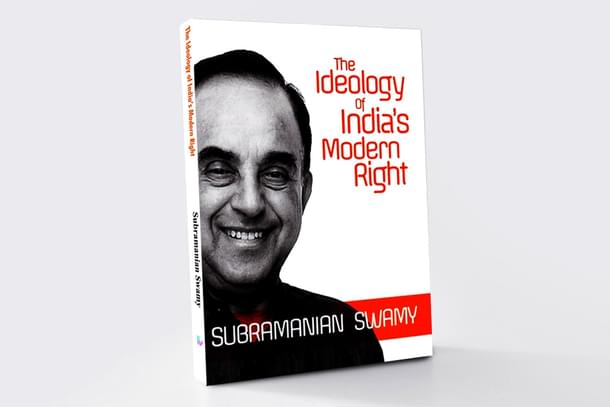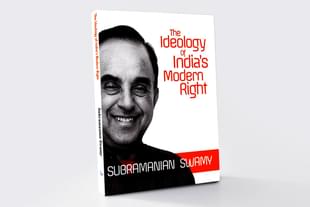Magazine
The Road To Constitutional Hindutva
R Jagannathan
Jul 09, 2018, 10:18 AM | Updated 10:18 AM IST
Save & read from anywhere!
Bookmark stories for easy access on any device or the Swarajya app.


One of the problems with any ideology is that if it does not define itself clearly — and, frequently, in changing times — its enemies will do so, often to its detriment. Despite some efforts at self-definition and reformulation over the last two centuries, terms like Hindus, Hinduism, Hindutva and Hindustan have been mangled out of shape by its detractors, depending on the politics of the person doing the defining. Thus Shashi Tharoor, in his latest book Why I am a Hindu, seeks to differentiate between Hinduism and Hindutva, relegating the latter to a narrow and vicious ideology propagated by cow vigilantes and minority-baiters.
Others, including many in the Congress and the ideological Left, while having no love lost for Hindus or Hinduism, suddenly discover that the votaries of “Hindu Rashtra” are not true Hindus. With Hindu votes tending to go to the Bharatiya Janata Party (BJP) under Narendra Modi, many in the Congress would now like to label him as non-Hindu, as Kapil Sibal famously did before the Gujarat assembly elections. People who have no use for Hinduism at other times, suddenly find it a good stick to beat Hindutva with. In today’s contested political milieu, Hindus and Hindutva are declared to be polar opposites.
This is where Subramanian Swamy’s new book, The Ideology of India’s Modern Right, tries to make a useful contribution. The book’s subtitle, which figures on an inside page rather than the cover, says the ideology is “based on the Hindutva mindset.” It seeks to draw on earlier attempts by various political and social ideologues to define Hindutva, from Vinayak Damodar Savarkar to Deen Dayal Upadhyaya, and recontextualise them for modern India, where the vexing question is this: can Hindutva coexist with the pluralist ideals of the Indian Constitution?
To Swamy, the answer is an emphatic yes, and to the extent he succeeds in convincing the reader, you could relabel his schema as “Constitutional Hindutva”. He concedes that the Constitution needs some minor tweaks to make this possible, but mostly he relies on cases already decided by the Supreme Court to conclude that the courts too have smoothened the road to Constitutional Hindutva.
To summarise his ideas, he offers us eight components of the “Hindutva mindset”: one is that India must be seen as an unbroken civilisational entity going back at least 10,000 years; two, national policies must seek to harmonise material with spiritual goals; three, the word “secular” in the Constitution must be replaced with the word “spiritual” to bring it in tune with the Indian ethos; four, mass religious conversions need to be banned (no surprise here); five, the birth-based determination of caste is “unHindu” and hence should be “purged from the body politic” to forge a “virat Hindu unity”; six, true Hindus must make learning Sanskrit a priority so that it can become a national link language at some point in time; seven, Hindus must give no quarter to tyranny and terrorism; and, eight, the Hindutva art of governance must build on the principles of Ram Rajya and Chanakya-niti, where retaliation for attacks on Hindus must be an essential part of thinking.
To get all this done, Indian history has to be defalsified, rescued from the deracination of Left historians. Swamy also has economic ideas for a minimalist state which, however, is maximalist only when it comes to law and order; he has thoughts on how rootedness is vital to tap our demographic dividend.
To show that our Constitution already favours a Hindu-ised approach to nationhood, Swamy points out that the original document had 22 illustrations to record India’s cultural history — from Ram and Krishna to Hanuman, Buddha and Mahavira, and further to Akbar, Shivaji and Guru Gobind Singh; resistance to British rule is represented by Tipu Sultan and Rani Laxmibai, with Tipu’s depredations in the Malabar and forced conversions apparently being ignored.
Swamy also points out that almost every major post-Independence institution draws on Hindu sacred texts, from the government of India’s own motto of Satyameva Jayate, to the Supreme Court’s Yato Dharmastato Jayah, to All India Radio’s Bahujanhitaya, the Indian Army’s Seva Asmakam Dharmah to the LIC’s Yogakshemam Vahamyaham. Doors and domes in the Parliament building are adorned by verses from the Upanishads, Panchatantra and the Mahabharata, among others.
When it comes to building the Ram Mandir in Ayodhya, Swamy sees no legal hurdle since a constitutional bench in 1994 (6 SCC 361) decided that a mosque “is not an essential part of Islam and hence it can be demolished for a public purpose by a government”. On the other hand, a temple always remains a temple, according to a House of Lords judgment of 1992 in the Nataraj idol case, because of “prana prathistha puja” as per the Agama Shastras. If Indian courts accept this idea, it paves the way for reclaiming other temples over which mosques or churches have been built, including Kashi and Mathura. As for the uniform civil code, Swamy points out that recent court verdicts in the triple talaq case, and the earlier one on Shah Bano have already started dismantling Sharia in subtle ways.
Swamy, who has played various roles in his 78-and-odd years — as a central minister, a staunch critic of the BJP’s tallest icon, Atal Behari Vajpayee, a friend of Rajiv Gandhi and scourge of his surviving spouse and son, and as a general crusader against corruption — took his ideas to the activist stage in 2014 by launching the Virat Hindustan Sangam.
The flaw in Swamy’s grand thesis is obviously the nature of India’s diverse realities, and the extremely adversarial nature of politics, which makes even minimal consensus on his ideas impossible to envision. So, the problem with this book is not in how it seeks to define Hindutva’s future, but how it fails to reckon with the reality of present day India, where even yoga is a bone of contention.
Where it scores is in taking forward the ideas of earlier travellers on the road to Hindutva. Savarkar famously popularised the term Hindutva, choosing to define it as the quality of Hinduness, with the Hindu being someone whose motherland, ancestors and sacred places were entirely entwined with the political entity called India.
For Savarkar, Hinduism, the religion, was a subset of the larger quality of Hindutva, and he sought the end of caste and other internal divisions for the pursuit of Hindu political power and greatness. Not for him the pursuit of otherworldly bliss. M S Golwalkar, the second chief of the Rashtriya Swayamsevak Sangh (RSS), rejected pure constitutional nationhood and saw Hinduism as defining the nation. He fantasised about dhimmifying the minorities in India. Deen Dayal Upadhyaya and Syama Prasad Mookerjee, both key players in the founding of the Jana Sangh, precursor to the BJP, extended these definitions by making the idea of Hindu Rashtra optically more inclusive, with spaces being created for the minorities, who at least identified their ancestors as Hindus.
We need to appreciate Subramanian Swamy’s efforts to flesh out their ideas further. What a pity the book is badly edited and tackily produced.
Jagannathan is former Editorial Director, Swarajya. He tweets at @TheJaggi.





